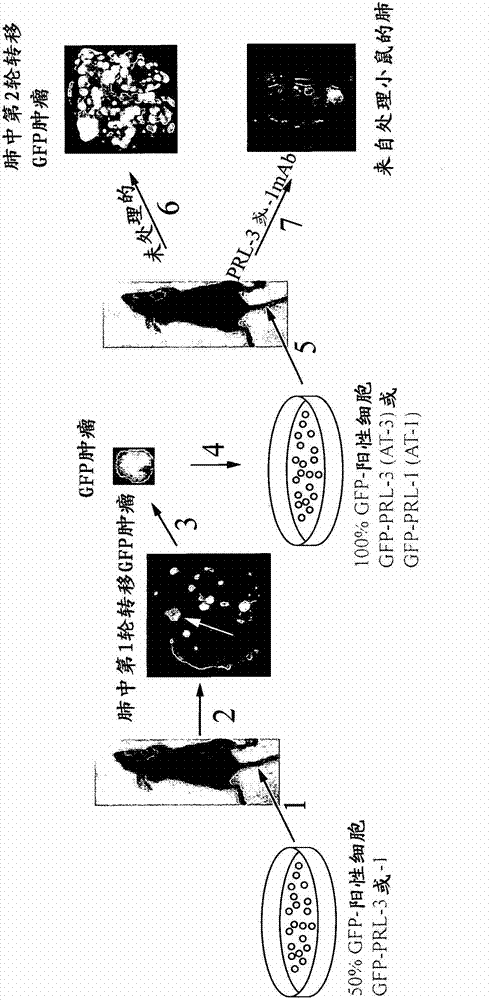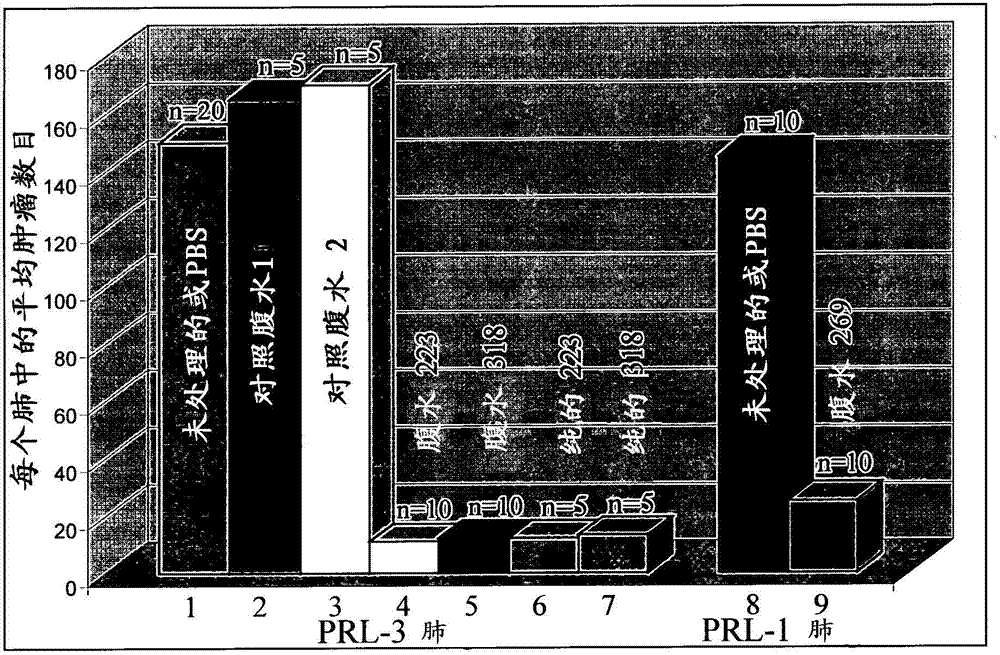Antibodies binding to an intracellular PRL-1 OR PRL-3 polypeptide
A PRL-1, antibody technology, applied in the medical field, can solve the problem that the antibody cannot pass through the cell membrane and cannot approach the antigen, etc.
- Summary
- Abstract
- Description
- Claims
- Application Information
AI Technical Summary
Problems solved by technology
Method used
Image
Examples
Embodiment 27
[0079] Example 27 shows that anti-PRL1 antibody 269 can bind to epitopes TYKNMR and TLNKFI. Accordingly, the present inventors provide anti-PRL antibodies such as anti-PRL1 antibodies that bind the sequence TYKNMR. The inventors also provide anti-PRL antibodies such as anti-PRL1 antibodies capable of binding TLNKFI. The anti-PRL antibody may have the ability to bind both sequences simultaneously.
[0080] Furthermore, Example 27 shows that anti-PRL3 antibodies can bind the epitopes KAKFYN and HTHKTR. Accordingly, the inventors provide anti-PRL antibodies such as anti-PRL3 antibodies that bind the sequence KAKFYN. The present inventors also provide anti-PRL antibodies such as anti-PRL3 antibodies capable of binding HTHKTR. The anti-PRL antibody may have the ability to bind both sequences simultaneously.
[0081] The anti-PRL antibody may comprise the variable region of antibody 269, the variable region of antibody 223 or the variable region of antibody 318, each of which is...
Embodiment 9
[0097] Example 9 describes the generation of PRL overexpressing tumors in mice and provides an animal model for metastasis and cancer therapy. Examples 10-12 demonstrate that animals treated with anti-PRL antibodies showed significantly lower metastatic lung tumors compared to animals not treated with anti-PRL antibodies. Specifically, the treated animals showed approximately 90% fewer tumors than untreated animals. The anti-PRL antibody is capable of binding and blocking the activity of a PRL polypeptide despite the intracellular localization of the PRL polypeptide. The inventors' studies represent the first demonstrations that metastasis can be effectively (approximately 90%) blocked by the use of monoclonal antibodies against the respective phosphatases despite their intracellular localization.
[0098] The present inventors have also shown that anti-PRL-3 monoclonal antibodies can effectively block the formation of metastases in the human ovarian cancer cell line A2780 ex...
Embodiment 1
[0445] Example 1. Cell lines: CHO-K1, A2780 and CT26
[0446] CHO-K1 cells, A2780 human ovarian cancer cells and CT26 mouse colon cancer cells were purchased from ATCC (Manassas, VA).
PUM
 Login to View More
Login to View More Abstract
Description
Claims
Application Information
 Login to View More
Login to View More - R&D
- Intellectual Property
- Life Sciences
- Materials
- Tech Scout
- Unparalleled Data Quality
- Higher Quality Content
- 60% Fewer Hallucinations
Browse by: Latest US Patents, China's latest patents, Technical Efficacy Thesaurus, Application Domain, Technology Topic, Popular Technical Reports.
© 2025 PatSnap. All rights reserved.Legal|Privacy policy|Modern Slavery Act Transparency Statement|Sitemap|About US| Contact US: help@patsnap.com



